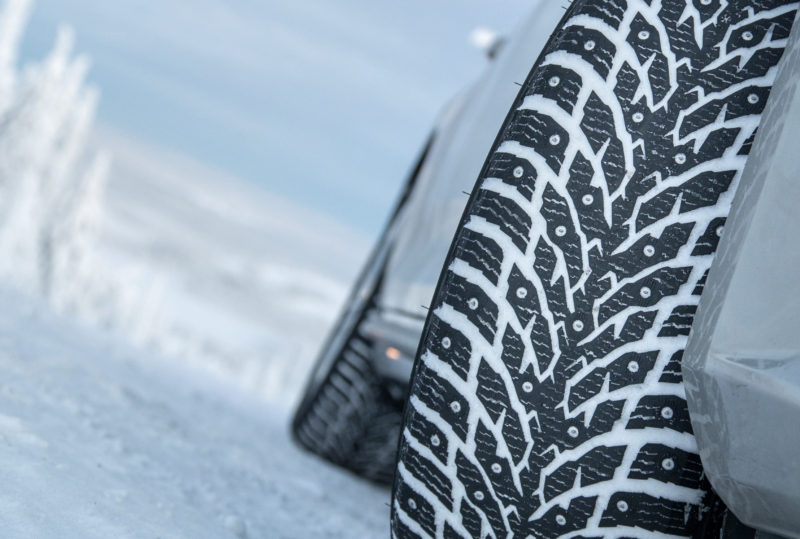
The Winter weather is here, and it’s time to talk about Winter tires. Too many people end up in the ditch when the snow and ice make their first appearances. Safety on the road starts with having proper tires on your vehicle for the weather. Here are some facts about tires that might keep everyone a little bit safer on our roads this season.
Types of Tires and When They Perform Best:
All Season Tires:
- These tires are actually 3-season tires: Spring, Summer and Fall.
- They are optimized for weather +7 degrees or higher and their tread is engineered to cover more road surface, not for gripping on ice, snow or slush.
- Only tires with the Mountain Snowflake symbol are suitable for Winter driving, which all-season tires do not have.
All-Weather Tires:
- These can be left on your car year-round
- They have the Mountain Snowflake symbol so they are safe for Winter driving in Canada
- Performance is optimized for above and below +7 degrees Celsuis. That means you don’t need to switch them or store and extra set between seasons
- Good for Canadian motorists who do not embrace having two sets of tires – you don’t need to change them until you need new tires!
- Money saver: you don’t need two sets of tires
Winter Tires:
- Extreme performance when the temperature is below +7 degrees Celsius
- Engineered for optimal grip on snow, ice and slush
- Great traction
Even a winter tire with only 50% grip left will handle better in the snow than an all-season tire, because the rubber in engineered to perform best below +7 degrees Celsius.
Studded Winter Tires:
The Ultimate tire for performance, safety and confidence for Canadian drivers. These are not your Father’s studded tires. Recent improvements in the engineering of studded tires is amazing. Here are some facts:
- Reduced noise: technology has allowed the studded Winter tires of today become quieter and have less of an impact on our roads *see below for details*
- They have better grip on hard packed snow, ice, frozen snow and freezing rain than any other kind of tire: studded is the ultimate level of grip on these sort of surfaces
- The studs are optimized with subtle differences in the tips according to their position on the tire:
-Studs in the centre are optimized for grip during accelerating or breaking (longitudinal grip)-Studs on the shoulder have been optimized for lateral grip – for cornering, collision avoidance maneuvering, and steering - Most studded tires are factory studded before sent to retail locations, passing the savings on to the consumers.
Good to know: Studded Winter tires will stop approximately 5m shorter than a non-studded winter tire breaking on ice, and 12m shorter than an all season tire on the same surface.
Myths about studded tires:
They’re loud and they damage our roads. Not anymore. Studded tires now have soft rubber backing strip under the tread that acts as a cushion for the stud so they don’t effect the ground with the same degree of force. A cavity behind the back of the stud also traps air which acts as a secondary cushion as well – reducing both noise and wear on the roads.
Studded tires are not allowed on Canadian roads. False. They are perfectly legal. Some provinces restrict studded tires to use from October 1 to April 30, but Alberta is not one of those provinces – we have no restrictions on them at all!
Tire Pressure:
Regardless of the type of tires you have on your vehicle, make sure you are maintaining the tire pressure. For every 5 degree drop in temperature, you lose approximately 1 psi of pressure in your tires. Did you know? You can get your tire pressure checked and balanced for free at any Kal Tire location!
Thinking about getting new tires this season? If you don’t know your tire size or exactly what you’re looking for, use the Kal Tire guide to find the right size for your vehicle, and give you multiple tire options with prices here.
Check out the Edmonton Mama Instagram stories for our day with Bill Gardiner at Kal Tire learning about safe Winter driving, Winter tires, tips and more.
No matter which tires you have on your vehicle, always drive according to the road conditions.
This post was sponsored by Kal Tire.
